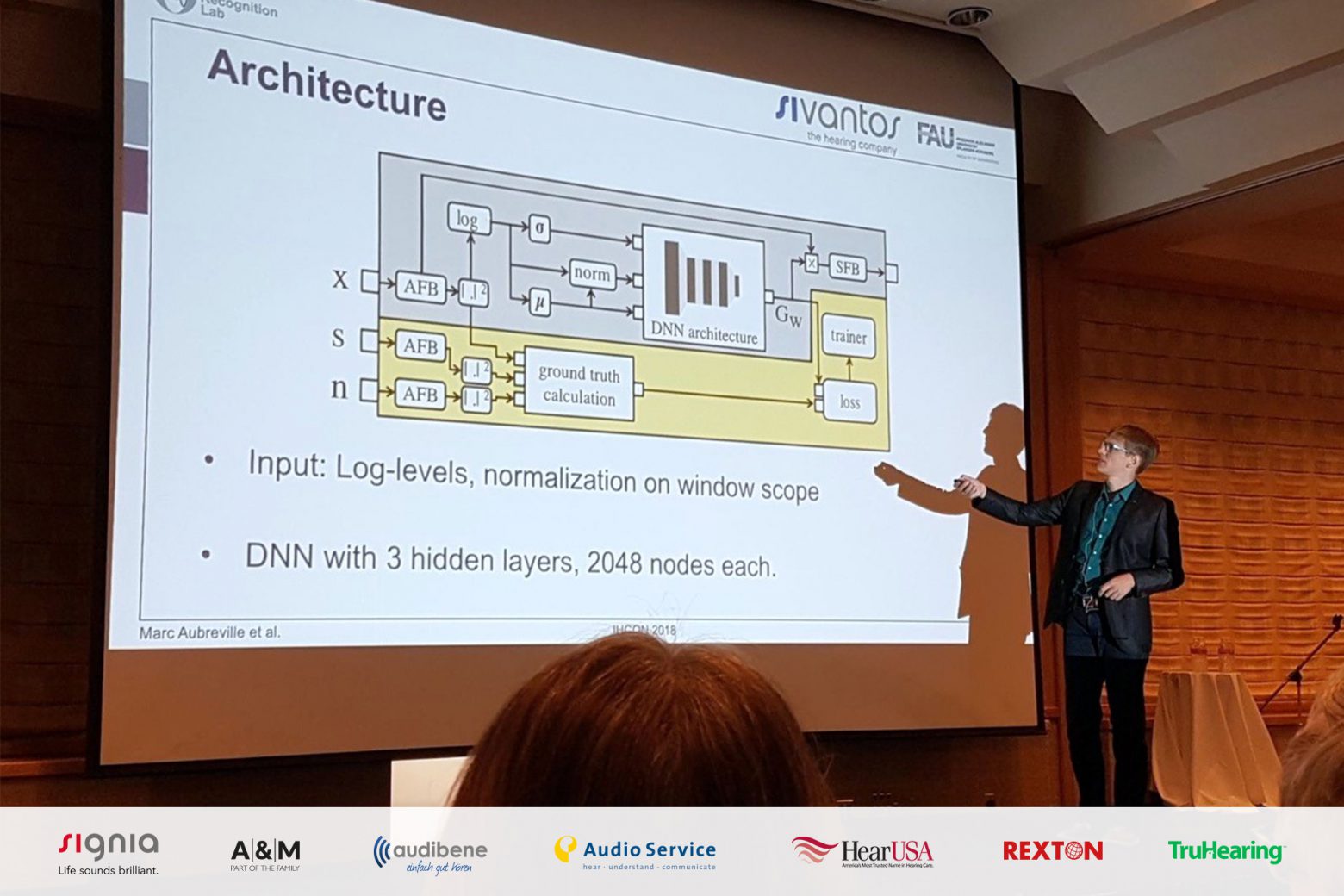“How can deep neural networks reduce noise under the very strict side conditions of hearing aids?”
This question – and the answer to it – was presented by Marc Aubreville, System Architect for Sivantos Germany, at the 2018 International Hearing Aid Research Conference (IHCON) held August 15-19 in Lake Tahoe, California in the US.
Noise reduction has been a standard feature in hearing aids for decades. However, this technology is typically only able to handle stationary noise or noise originating from certain directions (e.g., from behind). Given the diversity of background noises in different situations, this can pose significant challenges for noise reduction algorithms.
Based on research in cooperation with the Pattern Recognition Lab of the Friedrich-Alexander University Erlangen-Nuremberg, Marc Aubreville and his team investigated the possibilities of using deep neural networks to improve the signal quality of hearing aids. Why?
Deep neural networks, a form of machine learning inspired by the nervous system of the human brain, present some fascinating possibilities. They are shown to be beneficial in many areas, and are already used in a number of systems, such as automatic speech recognition and image recognition systems.
The big advantage of these schemes is that no explicit model knowledge of all potential background noises or target signals is required. Instead, a large data set is used for training, allowing the model to learn the signal enhancement function dependent on noisy input signals on its own.
But they also have long been criticized as black box approaches with unpredictable behavior in unknown situations. This is especially true for a direct prediction of the enhanced signal, which suffers from a non-negligible risk of producing unpleasant or annoying signals at the ear drum. To cope with the risk of potential misbehaviors, a noise reduction operator was embedded into an existing signal processing framework.
“In our work, we present and evaluate a deep neural network-based noise reduction scheme that can be integrated seamlessly into existing hearing instrument signal processing chains. It is most fascinating how robust the algorithms reacted to new signals and situations. This made us confident for a potential future usage of deep neural networks in hearing aids,” said Marc.
IHCON is one of the world’s biggest gatherings focused on hearing aid research and is held every two years in Lake Tahoe. “IHCON is one of the most important gatherings of hearing aid researchers. The atmosphere is very friendly and open minded. Although some research topics are still restricted, the scientific exchange is very high,” Marc concludes.
•••••••••••••••••••
Do you have questions or comments? If you are an analyst, you will find the corresponding contact information on our Investor Reports page. If you are a journalist, please submit your request through our Message Center as Press. If you are interested in joining our team, please visit our Careers page learn more about opportunities with us. Suppliers can find relevant contact on the Suppliers page. Both hearing care professionals as well as people with hearing loss can find more information about the premium brand Signia on the websites.

